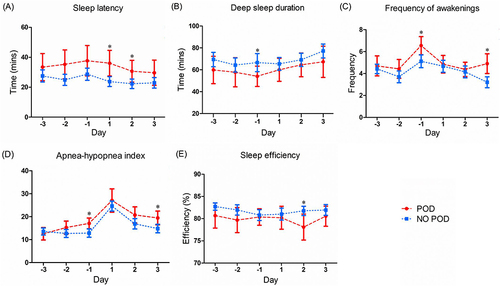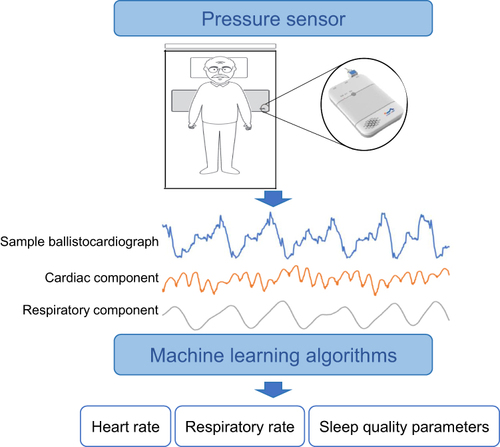Figures & data
Table 1 Univariate Analysis According to Sleep Disturbances
Table 2 Baseline Characteristics Associated with Postoperative Delirium
Table 3 Surgical Characteristics Associated with Postoperative Delirium
Table 4 Variables Associated with Postoperative Delirium on Multivariable Analysis
Figure 3 Different parameters of perioperative sleep patterns in patients with and without POD ((A): Sleep latency; (B) Deep sleep duration; (C) Frequency of awakenings; (D) Apnea-hypopnea index; (E) Sleep efficiency).

Table 5 Clinical Outcomes Associated with Postoperative Delirium
Data Sharing Statement
The data used to support the findings of this study are available from the corresponding author (Baoguo Wang) upon request.


